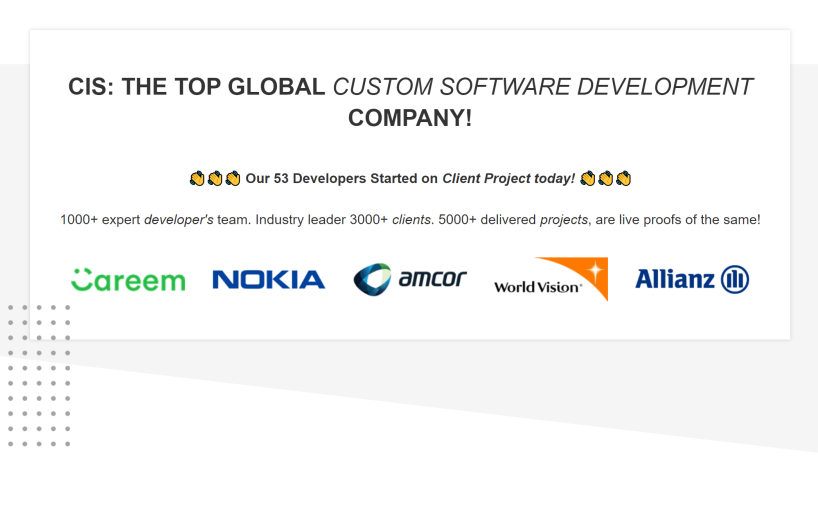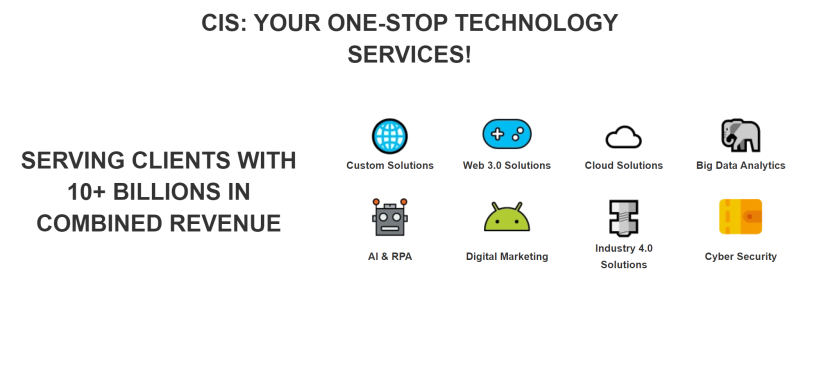Maximizing ROI: The Cost and Benefits of Adopting Oracle Warehouse Management for Your Business
- Oracle Warehouse Management - Detailed Analysis by Enterprise Solutions Experts
Request A Free Consultation - Why Use Oracle Warehouse Management



Why Mid-size Companies and Enterprises needs Oracle Warehouse Management:
Oracle Warehouse Management provides mid-size companies and enterprises with a comprehensive, integrated solution for managing their warehouse operations. It helps them to automate, streamline, and optimize their processes while reducing costs associated with manual labor and increasing overall efficiency. With Oracle Warehouse Management, businesses can manage inventory more effectively across multiple warehouses or locations; track shipments in real time; improve order fulfillment accuracy; reduce lead times; increase customer service levels; improve supply chain visibility through analytics and reporting capabilities; enhance security of goods in transit; minimize losses due to theft or damage; as well as ensure compliance with industry regulations.
Benefits of using Oracle Warehouse Management in Mid-size companies and Enterprises:
1. Increased Visibility:
Oracle Warehouse Management provides increased visibility into inventory, order fulfillment and warehouse operations. This helps companies ensure that they are meeting customer demands while also optimizing their supply chain processes.
2. Improved Efficiency:
Oracle Warehouse Management enables mid-size companies and enterprises to improve their operational efficiency by reducing manual labor costs and improving accuracy in order picking, packing, receiving and shipping activities. It also allows for greater control over inventory levels which can help reduce stockouts or excess inventories.
3. Automated Processes:
Oracle Warehouse Management automates many of the tedious tasks associated with managing a warehouse including generating pick lists, tracking orders through different stages of the supply chain process, creating labels for shipments, updating stock levels in real time, etc., resulting in improved productivity across the entire organization.
4. Reduced Costs:
By streamlining processes such as order entry/fulfillment cycle times and eliminating errors due to human intervention from manual data entry processes or mislabeling products during shipment preparation; mid-size companies and enterprises can benefit from significant cost savings over time when using an automated system like Oracle Warehouse ManagementDetailed Features of Oracle Warehouse Management for Mid-size companies and Enterprises:
1. Automated Inventory Management:
Oracle Warehouse Management provides automated inventory management capabilities that enable mid-size companies and enterprises to accurately track and manage their inventory in real time. This includes features such as item tracking, lot/serial control, bin location assignment, cycle counting, stock replenishment and more.
2. Advanced Task Processing:
Oracle Warehouse Management enables organizations to streamline their warehouse operations by providing advanced task processing capabilities such as order picking, putaway, kitting and cross docking. It also supports the creation of optimized pick paths for efficient order fulfillment processes.
3. Real Time Visibility & Reporting:
With Oracle Warehouse Management's real time visibility into inventory levels and other key metrics businesses can quickly identify issues in the supply chain before they become problems allowing them to take corrective action before it is too late. Additionally powerful reporting tools are available to help gain further insights into warehouse performance data enabling better decision making across the organization.
4. Mobile Capabilities:
To support today's increasingly mobile workforce Oracle Warehouse Management offers a suite of mobile applications that allow users to access critical information on demand from any device with an internet connection including tablets smartphones or laptops . These apps provide full visibility into all aspects of warehousing operations from receiving goods through delivery so employees can stay informed wherever they may be located at any given moment .Who are the Users of Oracle Warehouse Management:
Oracle Warehouse Management is used by a variety of customers, including retailers, manufacturers, wholesalers, and logistics companies. These businesses use the software to manage their warehouse operations more efficiently and cost-effectively. Some notable customers include Walmart, Amazon, Coca-Cola Enterprises, Nestlé Waters North America Inc., DHL Supply Chain Americas Inc., JB Hunt Transport Services Inc., Ryder System Inc., and C&S Wholesale Grocers.
How to ensure Data Security and Compliance with Oracle Warehouse Management:
1. Implement a strong access control system to ensure that only authorized users are able to access the Oracle Warehouse Management System. This can be done by assigning specific roles and privileges for each user and regularly monitoring user activity.
2. Establish comprehensive security policies, procedures, and guidelines for data handling in the warehouse environment such as physical security measures, data encryption, secure transmission protocols, etc.
3. Utilize advanced authentication methods such as biometric identification or two-factor authentication to prevent unauthorized access to sensitive information stored in the system.
4. Make sure all employees understand their role in protecting confidential data within the organization by providing regular training sessions on data privacy and security best practices.
5. Regularly audit your Oracle Warehouse Management system to identify any potential vulnerabilities or compliance issues before they become serious problems down the line
How Oracle Warehouse Management can increase organization Productivity, Agility, and Profitability:
Oracle Warehouse Management can help increase an organization's productivity, agility and profitability by:
1. Automating the warehouse processes to reduce manual labor, streamline operations and improve accuracy.
2. Increasing visibility into inventory levels and stock locations with real-time data tracking.
3. Enhancing customer service through improved order fulfillment times and delivery performance metrics.
4. Optimizing pick/putaway tasks for faster cycle times in the warehouse environment.
5. Reducing costs associated with shipping errors or delays due to inaccurate inventory counts or misplaced items in the warehouse space .
How to Measure KPIs and increase Benefits of implementing Oracle Warehouse Management in Mid-size companies and Enterprises:
1. Measure the time savings:
Track how long it takes to complete tasks before and after implementing Oracle Warehouse Management. Compare the two metrics to measure improvements in efficiency.
2. Calculate cost savings:
Estimate the costs associated with manual processes prior to implementation, then compare them against new costs incurred from using Oracle Warehouse Management. This will help you determine if there's any cost savings from automating warehouse operations.
3. Evaluate customer satisfaction:
Ask customers for feedback on their experience with your warehouse management system and use this data to gauge customer satisfaction levels post-implementation of Oracle Warehouse Management software solution.
4. Monitor inventory accuracy:
Use analytics tools available within the Oracle Warehouse Management system to monitor inventory accuracy and adjust replenishment strategies as needed in order to ensure optimal stock levels are maintained at all times without overstocking or under stocking issues occurring due to inaccurate forecasting methods or other factors that can disrupt supply chain operations..
5 .Analyze labor productivity rates :
Review employee performance reports generated by the system regularly, tracking key performance indicators such as average pick rate, put away rate and number of orders processed per hour/day/week etc., so you can identify areas where further improvement is possible through better training or process optimization initiatives..
6 .Track shipping & delivery KPIs :
Analyze shipping & delivery KPIs like turnaround time, on-time deliveries, transit times etc., so you can understand how much faster goods are arriving at their destination compared with pre-implementation figures when manual processes were being used instead of automated ones enabled by Oracle WMS solutions..How Oracle Warehouse Management can increase Employee Morale in your organization:
Oracle Warehouse Management can increase organization employee morale by providing a streamlined, efficient workflow that reduces stress and frustration. This can be accomplished through automated processes such as barcode scanning for inventory tracking, automatic replenishment of stock levels, and real-time visibility into the warehouse operations. Additionally, Oracle Warehouse Management provides employees with better access to accurate information which helps them make informed decisions quickly and accurately. Finally, it allows for more collaboration between departments so everyone is on the same page when it comes to meeting customer demands or tackling new projects. All these features combine to create an environment where employees are empowered to do their best work in an atmosphere of trust and respect.
How Oracle Warehouse Management is Better than its Competitors:
Oracle Warehouse Management is better than its competitors in several ways. First, Oracle WMS offers a comprehensive suite of features and capabilities that enable organizations to optimize their inventory management processes. This includes advanced warehouse automation, real-time visibility into inventory levels and locations, order fulfillment optimization, and more. Additionally, Oracle WMS has powerful analytics tools that can provide insight into the performance of your warehouses and operations. Finally, it is highly scalable and customizable so you can tailor it to your specific needs.
Cost to Develop & Implemention of Oracle Warehouse Management:
The cost of developing and deploying Oracle Warehouse Management will depend on the size and complexity of the project. Generally, a basic implementation can range from $50,000 to $200,000 depending on the scope and requirements. Additional costs may include hardware, software licenses, consulting fees for customizations or integrations with other systems, training expenses for users, maintenance fees after deployment etc.
Why outsourcing implementation services for Oracle Warehouse Management is better for Mid-size companies and Enterprises:
Outsourcing implementation services for Oracle Warehouse Management is a great option for mid-size companies and enterprises because it allows them to take advantage of the expertise that experienced consultants can provide. These consultants are knowledgeable in the latest trends and strategies related to warehouse management, which can help businesses save time and money while increasing efficiency. Additionally, they can provide insights into potential improvements or modifications that may be needed in order to maximize operational success. Furthermore, outsourcing implementation services reduces overhead costs associated with hiring additional staff members who would need to be trained on the system. Finally, since these consultants specialize in this particular software solution, they will have a better understanding of any customization needs that may arise throughout the process.


